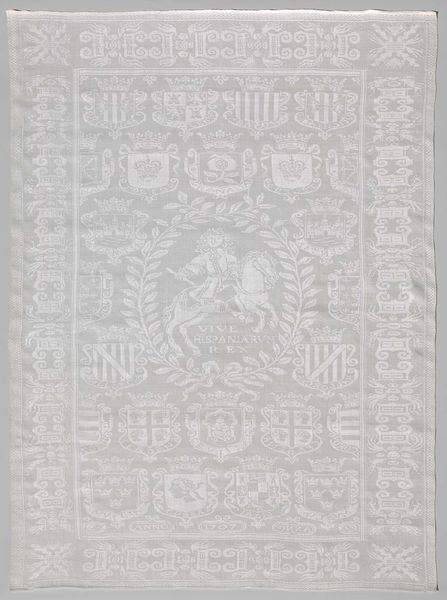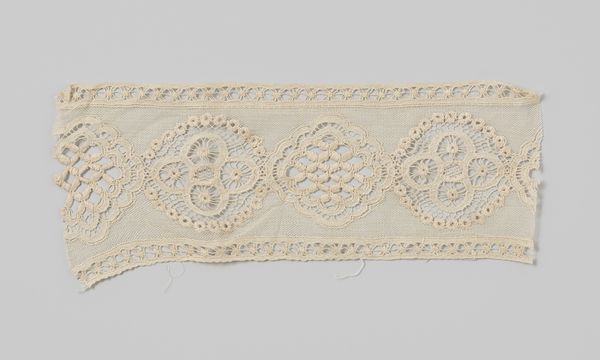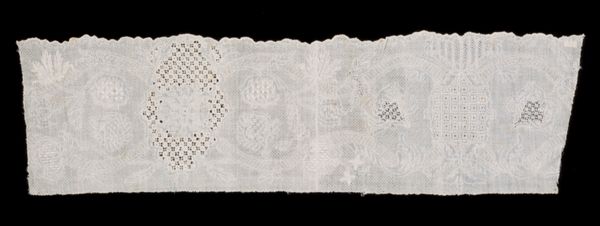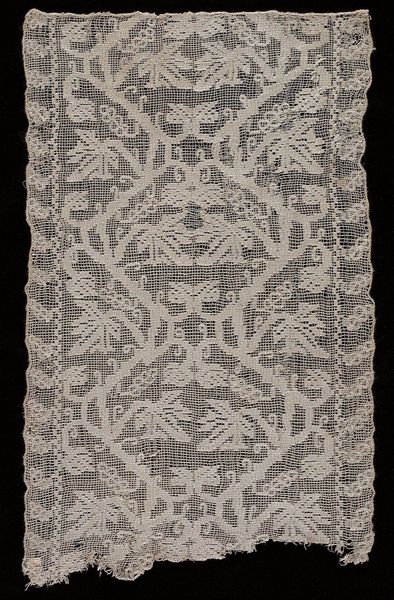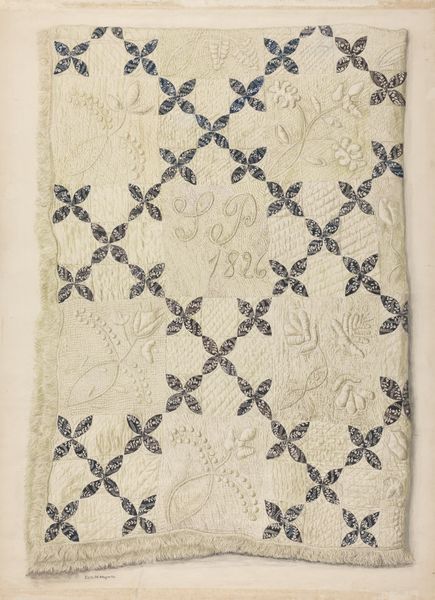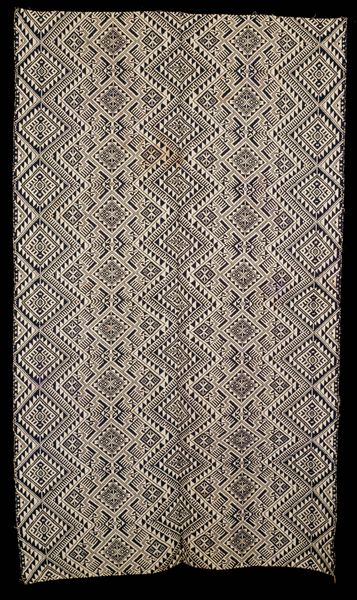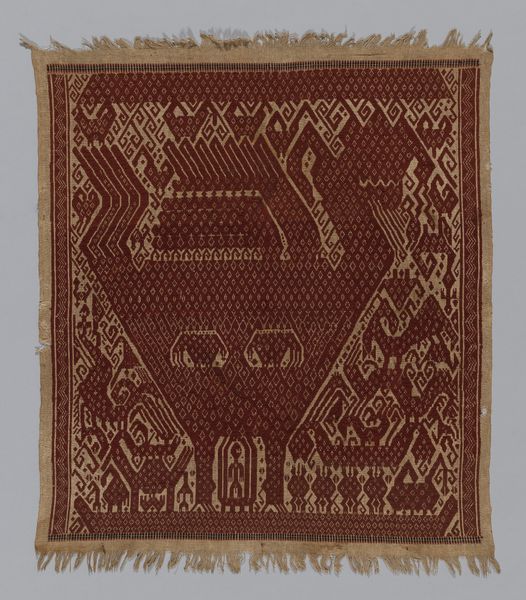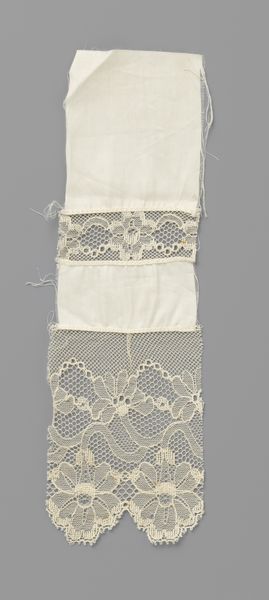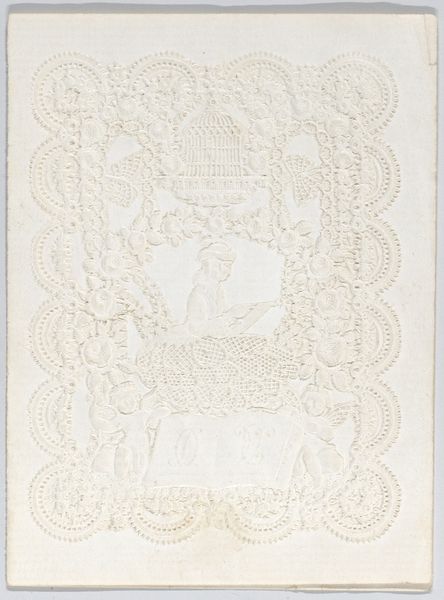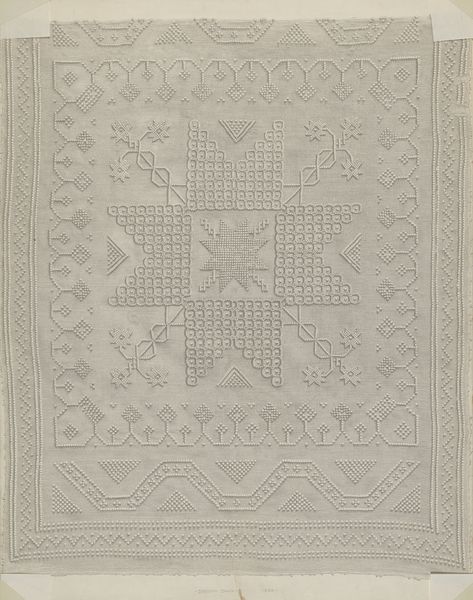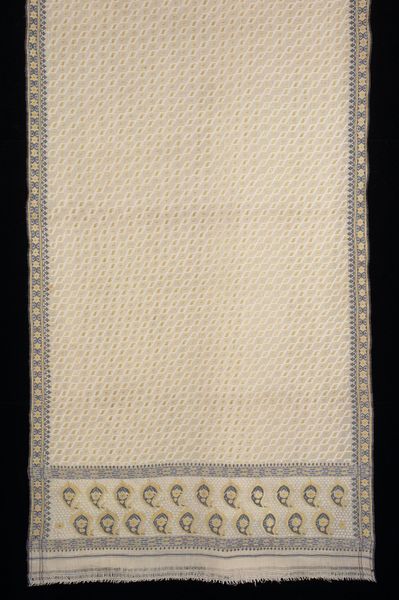
drawing, textile
#
portrait
#
drawing
#
natural stone pattern
#
textile
#
figuration
#
pattern design
#
repetitive shape and pattern
#
fabric design
#
repetition of pattern
#
regular pattern
#
pattern repetition
#
decorative-art
#
layered pattern
#
funky pattern
#
combined pattern
Dimensions: length 10 cm, width 4.5 cm
Copyright: Rijks Museum: Open Domain
Curator: I find this textile work so evocative. Known as “Panel of Needle Lace with Cat,” it was likely created sometime between 1920 and 1930 by an unknown maker. The delicate, almost ethereal nature of the needle lace gives it a certain presence, don't you think? Editor: It does have a certain appeal. The painstaking labour that goes into producing something like this by hand—it really forces one to consider the conditions of its creation. I imagine a maker focused and repetitive hand work Curator: Exactly. This repetition and detail is a powerful mode to process everyday gendered experiences or political statements by the creator of this needle lace. Textile production, as you know, has historically been women's work, relegated to the domestic sphere, sometimes the only available form of expression available to female identifying folks. The cat itself feels so wonderfully present, too. It's as if it’s observing us, peering through the lace curtain that constructs its space and life Editor: It is charming! Thinking materially, the pattern itself suggests both confinement and visibility—that grid beneath the cat—like looking into a terrarium or cage made of delicate netting. The artist, if this work was theirs, knew their textile techniques! Curator: Precisely. The artist plays with the cat as an ambivalent cultural signifier. On the one hand, it stands for independence, autonomy, a challenge to the status quo...yet cats are also icons of domesticity. Does that tell us anything about how women navigated societal constraints between the wars? Editor: That’s insightful! Considering this object was crafted through a community’s collaboration, their local economic system should be studied: Was it sold? Or was its making intended to provide domestic and private comfort and visual delight for the home? It gives pause to reflect Curator: It certainly does. It serves as a tangible piece of social commentary and personal exploration woven together. Editor: Absolutely, seeing the maker and consumer’s needs alongside production circumstances adds layers to interpretation, underscoring the complex intersection between creation and intention. Curator: Thanks for helping me tease out so many important layers. I always learn something new with each look and discussion! Editor: Same here! Analyzing the art materials illuminates the intersection of culture, history, and labour which enrich each work further, right?
Comments
No comments
Be the first to comment and join the conversation on the ultimate creative platform.
